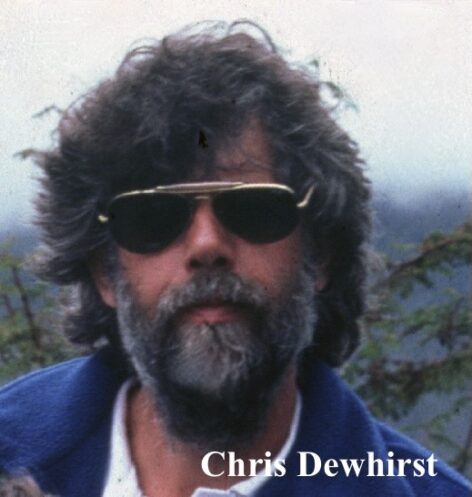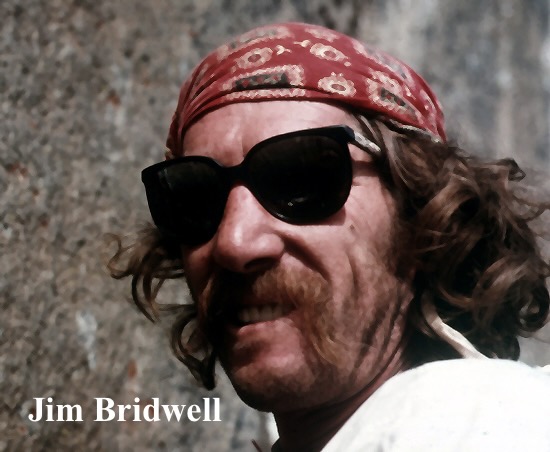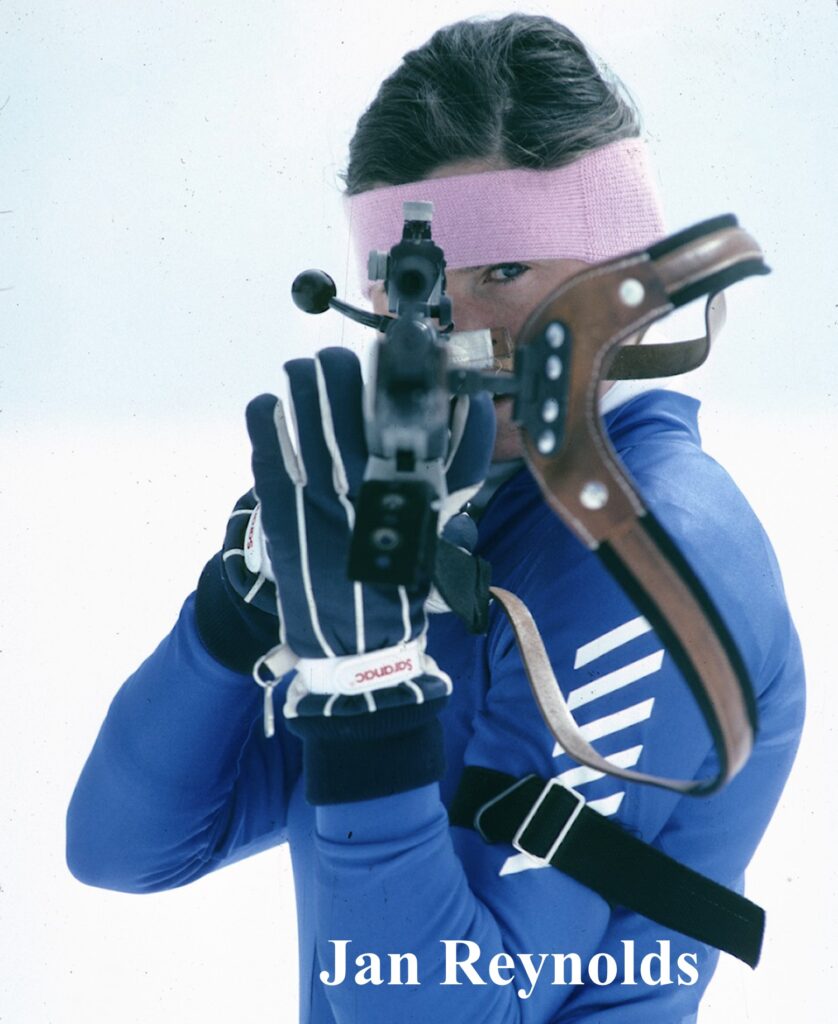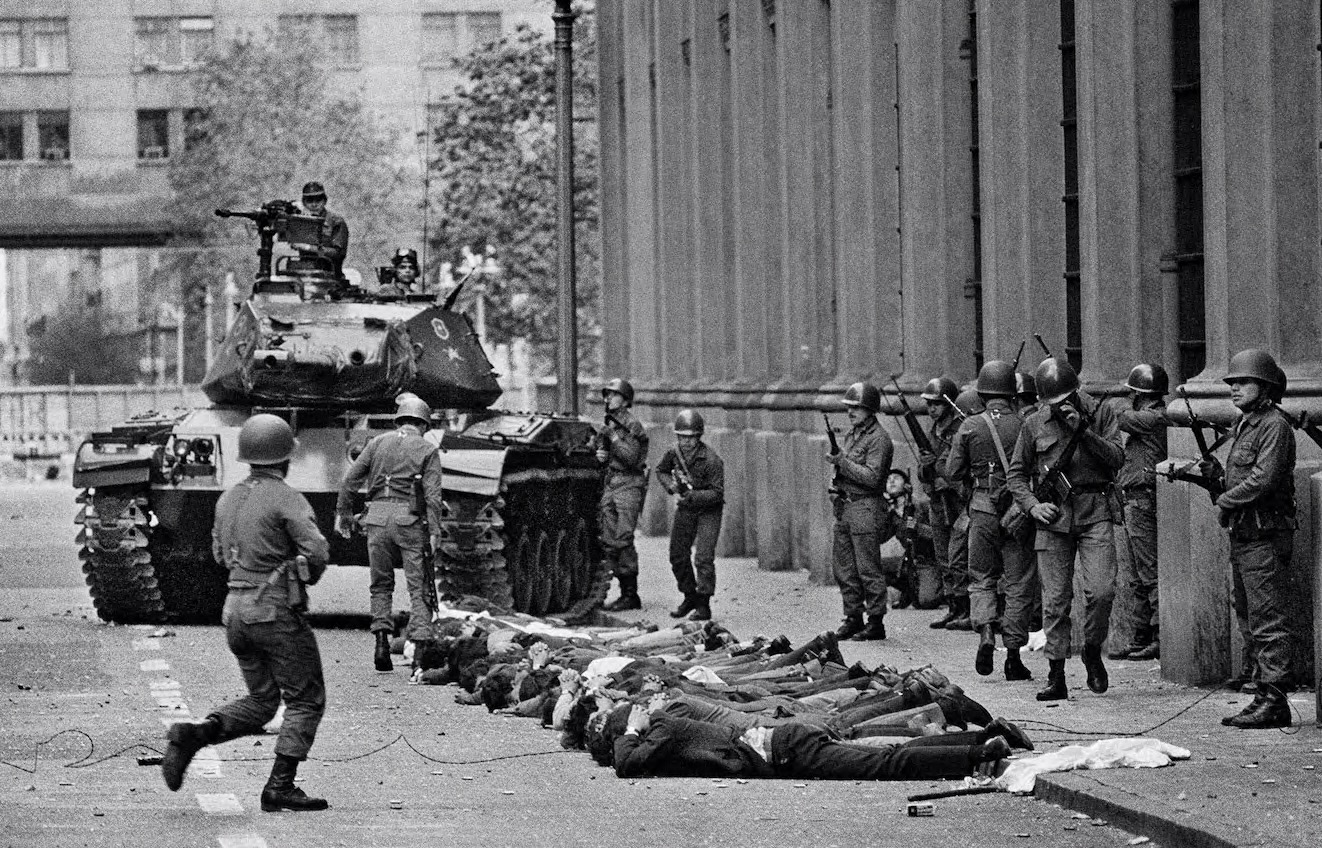
Mike Dillon Photograph.
During the second half of 1973, I lived in Yosemite, California climbing El Capitan and Half Dome by various routes, while Colonel Al Morgan, a distinguished, but disillusioned ex-US Air Force pilot, contracted his chopper for search and rescue operations within the surrounding National Parks. On occasions I helped perform unprincipled yet well-paid work, which is how I came to know him. He was politically connected and engaged in enterprises he later came to regret. At the time he believed they were legally sanctioned missions–umbrellaed by the National Security Agency–and that he worked directly for President Nixon.
Morgan introduced me to Val Chilling, a charismatic woman running the CIA operation that destroyed Chile’s democratically elected Government, when, on September 11, 1973, General Pinochet and his thugs murdered President Allende and his Cabinet and took control of Chile. Over the following 17 years Pinochet’s people tortured and killed thousands more citizens, many of whom were thrown alive from helicopters into the sea. A month after the coup Chilling hired me as Morgan’s co-pilot, running guns to the junta.
I’ve written this book for Al Morgan’s daughters, Kathryn and Taylor, who now have children of their own. They deserve the truth, or a close approximation, which I’ve avoided for decades. So, here it is, Katie and Tay, your dad’s story as well as mine, in full colour, first person, and narrated from the right hand seat. However, there are other people on board who speak for themselves.

Photograph: Yosemite Climbing Association.
Jim Bridwell–climbing legend and Yosemite Camp 4 luminary throughout the 1970s–was also involved in what went down that year. Some of his story is already on the public record. What follows won’t come as a surprise to those who knew him. The New York Times called him a mountaineering maverick while the Washington Post described him as free spirited. In fact, he was both–and much more besides. I’ve evoked his character: loyal, brave, quick-witted, optimistic and relentless. However, if you once knew Jim Bridwell, or are related, please forgive my failings. With his passing, Yosemite will never be the same.

Bruce Benedict Photograph.
Jan Reynolds–named ‘athlete of the decade’ by Esquire Magazine, and whose photographs have appeared in the New York Times and National Geographic–was first at the scene when Jon Glinsky crashed his drug-laden plane into a Yosemite lake. Ever since Yosemite, we’ve remained friends, and shared adventures. In 1985, Reynolds brought North Face on-board for our National Geographic Everest expedition. And three years later we raced across Australia in the Sydney Opera House balloon, sponsored by Louis Vuitton, coming last as it turned out. ‘It’s the journey,‘ said Reynolds, who is both wicked on a snow board, and dangerous to know. She brings a woman’s wisdom to the table, along with a dram (or two) of Irish Malt. This is her story as well, although I’ve taken liberties.
If you have any doubt about the CIA’s role in General Pinochet’s coup, there were others: Remember Colonel Oliver North’s criminal conviction in 1988, for gunrunning to the Ayatollah Khomeini, when afterwards he diverted profits to the Nicaraguan Contras attempting to overthrow the Sandinista Government. Code named Condor, the secret deal–authorised by President Ronald Reagan, and arranged through President Manuel Noriega in Panama–was uncovered by a US Congressional Committee, which is all on the public record. As it happened, a dump-truck of data was incinerated by the CIA immediately after the story broke, successfully derailing further prosecutions. Destabilising the Nicaragua Government was just a small part of the bigger picture. There were other CIA operations.

The Pulitzer Prize-winning investigative journalist, Gary Webb, in his 1998 book, Dark Alliance, tells the true story of the CIA selling crack cocaine to African Americans in California, raising money for the Nicaraguan Contras and other right-wing groups throughout South America. Some years after publishing the guns for drugs story, Gary Webb was shot twice in the head in his Carmichael home. The assassination, arranged by Chilling, was meant to look like suicide, but didn’t, whereas Barry Seal, employed to snitch on the Colombian cartels (whose story is elequoently portrayed by Tom Cruise in American Made), was a murder allowed to happen because someone in the DEA thought he knew too much.
As it happened, Dark Alliance was a poorly performed carbon-copy of Chilling’s 1973, CIA operation, code-named WAR, when we picked up marijuana in Mexico from Papa Grande, and cocaine in Panama from Col Noriega (later President Noriega). The contraband was exchanged in Las Vegas for M16s, transported to Santiago, supporting Pinochet’s junta. The remote sandy airstrip, twenty miles west of San Felipe, in Baja California, where the marijuana transactions occurred, remains faintly visible–although the infrastructure has been razed, all except for a small crooked cross, fabricated from the original windsock that now marks four graves.
Fifty years on, there are families still living in fear of arrest and deportation whose names I’ve changed. Several locations have been shifted to protect the innocent. To maintain the pace, I’ve condensed the multi-year timeframe into three months. Although Everest, Guns & Money has been written in the first person–and dramatised for entertainment–it still retains all the factual elements divulged by Colonel Al Morgan, during our multiple helicopter runs in the autumn of 1973. By stringing his gems into a palatable tale, I’ve hopefully captured his character and made the account more enjoyable. Unvarnished historical truths are somewhat indigestible. A colourful story works, whereas a deposition gathers dust.
Chris Dewhirst
During the second half of 1973, I lived in Yosemite, California, climbing El Capitan and Half Dome by various routes, while Colonel Al Morgan, a distinguished, but disillusioned ex-US Air Force pilot, contracted his chopper for search and rescue operations within the surrounding National Parks. On occasions, I helped perform unprincipled yet well-paid work, which is how I came to know him. He was politically connected and engaged in enterprises he later came to regret. At the time, he believed they were legally sanctioned missions–umbrellaed by the National Security Agency–and that he worked directly for President Nixon.
Morgan introduced me to Val Chilling, a charismatic woman running the CIA operation that destroyed Chile’s democratically elected Government, when, on September 11, 1973, General Pinochet and his thugs murdered President Allende and his Cabinet and took control of Chile. Over the following 17 years, Pinochet’s people tortured and killed thousands more citizens, many of whom were thrown alive from helicopters into the sea. A month after the coup Chilling hired me as Morgan’s co-pilot, running guns to the junta.
I’ve written this book for Al Morgan’s daughters, Kathryn and Taylor, who now have children of their own. They deserve the truth, or a close approximation, which I’ve avoided for decades. So, here it is, Katie and Tay, your dad’s story as well as mine, in full colour, first person, and narrated from the right-hand seat. However, there are other people on board who speak for themselves.
Jim Bridwell–climbing legend and Yosemite Camp 4 luminary throughout the 1970s–was also involved in what went down that year. Some of his story is already on the public record. What follows won’t come as a surprise to those who knew him. The New York Times called him a mountaineering maverick, while the Washington Post described him as free spirited. In fact, he was both–and much more besides. I’ve evoked his character: loyal, brave, quick-witted, optimistic and relentless. However, if you once knew Jim Bridwell, or are related, please forgive my failings. With his passing, Yosemite will never be the same.
Jan Reynolds – named ‘athlete of the decade’ by Esquire Magazine, and whose photographs have appeared in the New York Times and National Geographic – was first at the scene when Jon Glinsky crashed his drug-laden plane into a Yosemite lake. Ever since Yosemite, we’ve remained friends, and shared adventures. In 1985, Reynolds brought North Face on-board for our National Geographic Everest expedition. And three years later we raced across Australia in the Sydney Opera House balloon, sponsored by Louis Vuitton, coming last as it turned out. It’s the journey, said Reynolds, who is both wicked on a snow board, and dangerous to know. She brings a woman’s wisdom to the table, along with a dram (or two) of Irish Malt. This is her story as well, although I’ve taken liberties.
If you have any doubt about the CIA’s role in General Pinochet’s coup, there were others: Remember Colonel Oliver North’s criminal conviction in 1988, for gunrunning to the Ayatollah Khomeini, when afterwards he diverted profits to the Nicaraguan Contras attempting to overthrow the Sandinista Government. Code named Condor, the secret deal – authorised by President Ronald Reagan, and arranged through President Manuel Noriega in Panama – was uncovered by a US Congressional Committee, which is all on the public record. As it happened, a dump-truck of data was incinerated by the CIA immediately after the story broke, successfully derailing further prosecutions. Destabilising the Nicaragua Government was just a small part of the bigger picture. There were other CIA operations.
The Pulitzer Prize-winning investigative journalist, Gary Webb, in his 1998 book, Dark Alliance, tells the true story of the CIA selling crack cocaine to African Americans in California, raising money for the Nicaraguan Contras and other right-wing groups throughout South America. Some years after publishing the guns for drugs story, Gary Webb was shot twice in the head in his Carmichael home. The assassination, arranged by Chilling, was meant to look like suicide, but didn’t, whereas Barry Seal (American Made), who was employed to snitch on the Colombian cartels, was a murder allowed to happen, because someone in the DEA thought he knew too much.
